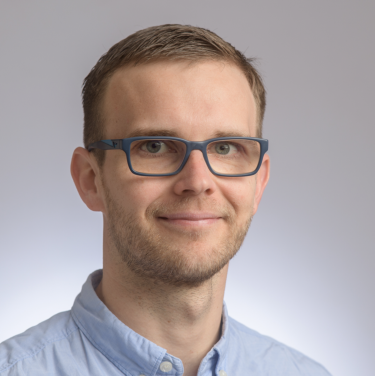Estimating biological stiffness without relying on external joint perturbations:a musculoskeletal modeling framework
Christopher Pablo Cop is a PhD student in the department Biomechanical Engineering. Promotors are prof.dr.ir M. Sartori , prof.dr. H.F.J.M. Koopman and prof.dr.ir. A.C. Schouten from the Faculty Engineering Technology.
 Understanding the stiffness of joints, skeletal muscles, and tendons is crucial for allowing effective interaction with the environment and facilitating versatile movements. For instance, navigating a slippery surface requires increased stiffness achieved through muscle co-contraction compared to walking on a dry flat surface. Investigating the modulation of biological stiffness in vivo during movement offers valuable insights into motor control strategies, with potential applications in developing control mechanisms for biomimetic prostheses or exoskeletons. Additionally, estimating biological stiffness in clinical settings can aid in identifying biomechanical factors contributing to movement disorders, leading to advancements in neurorehabilitation.
Understanding the stiffness of joints, skeletal muscles, and tendons is crucial for allowing effective interaction with the environment and facilitating versatile movements. For instance, navigating a slippery surface requires increased stiffness achieved through muscle co-contraction compared to walking on a dry flat surface. Investigating the modulation of biological stiffness in vivo during movement offers valuable insights into motor control strategies, with potential applications in developing control mechanisms for biomimetic prostheses or exoskeletons. Additionally, estimating biological stiffness in clinical settings can aid in identifying biomechanical factors contributing to movement disorders, leading to advancements in neurorehabilitation.
However, quantifying how humans modulate biological stiffness in vivo remains challenging due to the complex nature of the neuromusculoskeletal system. The gold standard for estimating joint stiffness involves controlled experiments where joint angles and torques are measured while a robotic manipulator applies small rotations to the joint. This method, while effective, has limitations in terms of lengthy lab-constrained measurements and the need for external joint perturbations, hindering clinical translation.
To address these challenges, this thesis focuses on developing an electromyography (EMG)-driven musculoskeletal modeling framework based on the Hill-type muscle model. The framework aims to estimate biological stiffness across joint, muscle, and tendon levels without external perturbations, paving the way for a broader range of movement studies. Validation against experimental data during dynamic ankle rotations demonstrates the framework's ability to calibrate parameters and estimate joint torque and stiffness profiles, even during natural or unperturbed movement.
Further validation across anatomical levels reveals accurate estimations of reference data, emphasizing the potential for understanding stiffness at multiple levels. This thesis also explores a hybrid muscle stiffness formulation valid for both dynamic and isometric contractions, enhancing overall estimations and suggesting applications in assistive device control.
In conclusion, the proposed framework lays the foundation for estimating biological stiffness during dynamic movement without external perturbations, with future work focusing on refining the model to control assistive devices and for clinical application.





